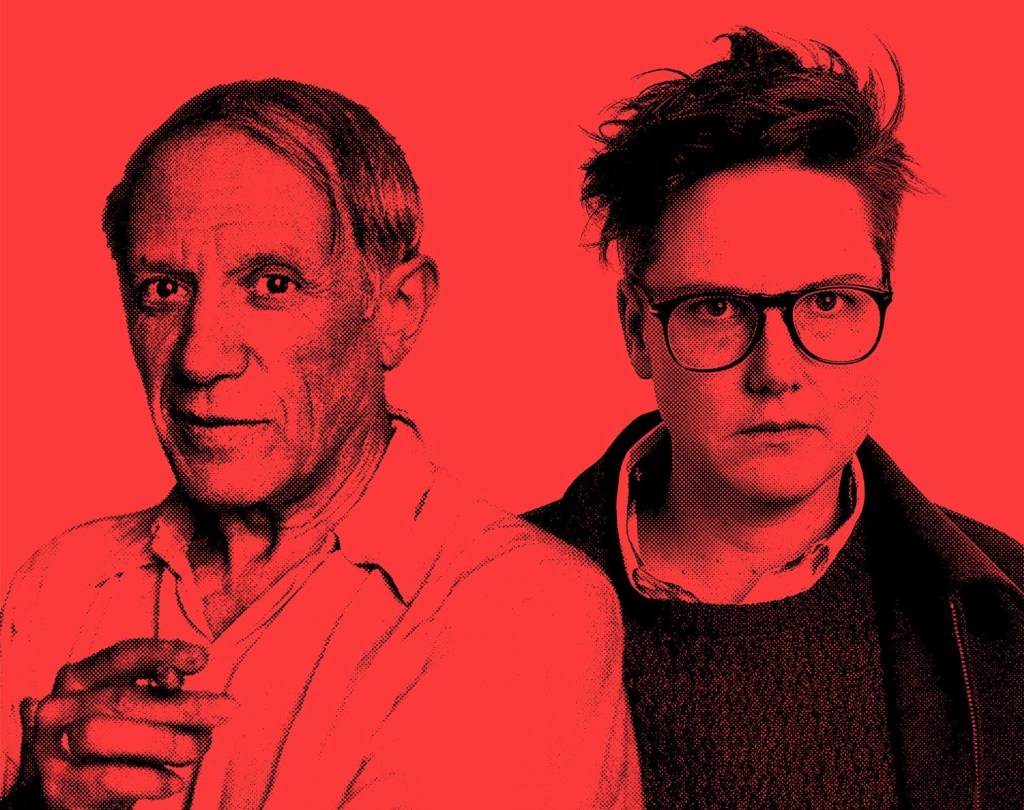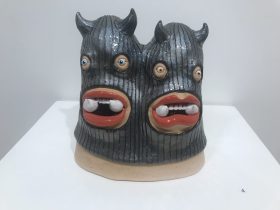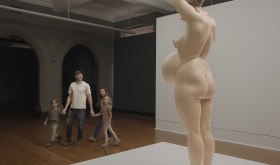It’s Pablo-matic: Picasso According to Hannah Gadsby had already been roundly denounced by the time I saw it at the Brooklyn Museum in New York. Yet, most of the people waiting to get in seemed excited, and the gallery was at capacity. The guy behind me was playing The Modern Lovers’ song ‘Pablo Picasso’ to his friend while we waited for our tickets, which felt a little on the nose, but maybe should have been a sign of how things were going to go.
I should preface by clarifying that this isn’t another melodramatic takedown of the show. It’s not a great exhibition, but it’s also not the catastrophe that some people have described. I was more annoyed than outraged: with a tighter grip on the reins and a clearer concept this could have been fun. As it is, the show is a victim of its own hype.
Right from the start, it’s not clear whether this is meant to be Picasso, through ‘contemporary, critical and feminist lenses’, as the text outside the gallery states – implying some scholarship, and a focus on works that directly respond to his – or ‘according to Hannah Gadsby’, which would be a less analytical, more playful exhibition. It’s trying to do both and succeeding at neither.
Catherine Morris and Lisa Small, the Brooklyn Museum’s curators who organised the show with Gadsby, have put together a mostly decent show of work from the Museum’s collections. Hannah Gadsby, the comedian whose 2018 performance Nanette discussed Picasso as an emblem of misogyny, is credited as a co-curator, but their involvement is haphazard.
Aside from the audio guide, their main presence is a series of wall labels, accompanying the Picasso works with their jokes and opinions. These captions feel like asides rather than critique, and on the whole the exhibition has a slightly confused air, like the entire thing was installed before someone brought Gadsby in to garnish it. The captions are harmlessly uninspiring – plenty of people were laughing when I saw the show. It’s possible (maybe even preferable, in some cases) to skip these captions and have a totally different experience.
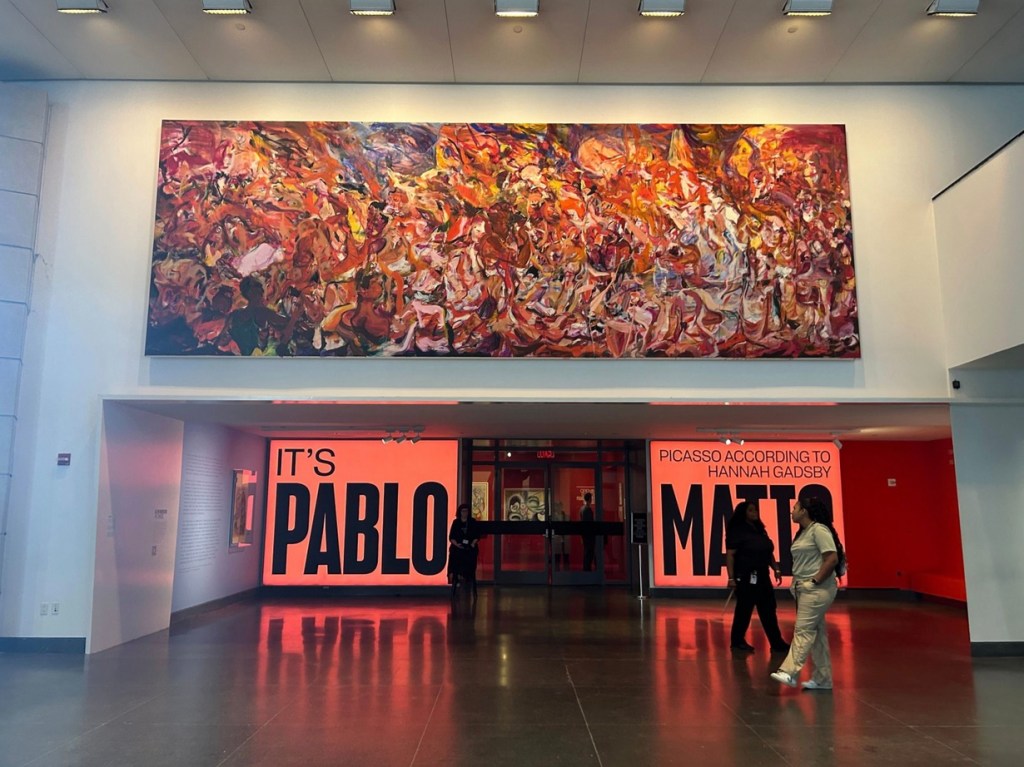
Humour is subjective, and the biggest letdown here is not Gadsby’s jokes. What really undermines the show is a lack of imagination. Nothing about its narrative feels particularly fresh or exciting, apart from the quirk of bringing in Gadsby as a co-curator. It’s Pablo-matic is an identity crisis of a show – an exploration of feminist modernism and a s***post-y trolling of Picasso sharing one room.
Where it’s weakest is in the actual references to Picasso; many of the artists make neutral-to-complimentary points about him and his work, and only a few works are directly responding to his oeuvre.
This is where the show’s claim to be a counter-narrative falls apart: These works have not been chosen because they challenge or transform Picasso’s work, and this is a feminist show only in the sense that it features works by feminist artists. Its politics and impact are limited to opposing the other artists to Picasso, in a way that falls into a predictable binary.
Pablo-matic is an identity crisis of a show – an exploration of feminist modernism and a s***post-y trolling of Picasso sharing one room.
Käthe Kollwitz’s Bust of a Working Woman in a Blue Shawl (1903) – a darkly gorgeous lithograph, made when she was in her mid-30s – is set oddly alongside some of Picasso’s teen drawings. Louise Bourgeois, arguably one of the most canonical artists in the show, is well-represented here – but the beguiling Décontractée (1990) is reduced by Gadsby’s audio guide to the most basic sex joke. It seems most of these artists are only being celebrated because of what they’re not. They’re not men. They’re not Picasso. This results in an overwhelmingly bitter taste.
The feminist shift that writers and theorists like Linda Nochlin, Griselda Pollock and Rozsika Parker brought to art – a reconsideration of who gets to be a genius, an engagement with what it means to ‘rediscover’ artists pushed outside of the dominant canon – is now firmly embedded in mainstream art historical discourse.
The Brooklyn Museum has an excellent collection of art by Black women. Displaying their work so prominently is the most redeeming feature of this show. Nina Chanel Abney’s Forbidden Fruit and Emma Amos’s Flower Sniffer both charmed audiences when I saw the show, though neither has much to do with Picasso’s work. The curators have not given the other artists anywhere near the status or space to even begin to stand up to Picasso, but if visitors take this chance to learn more about any of the works here, that will be a small success.
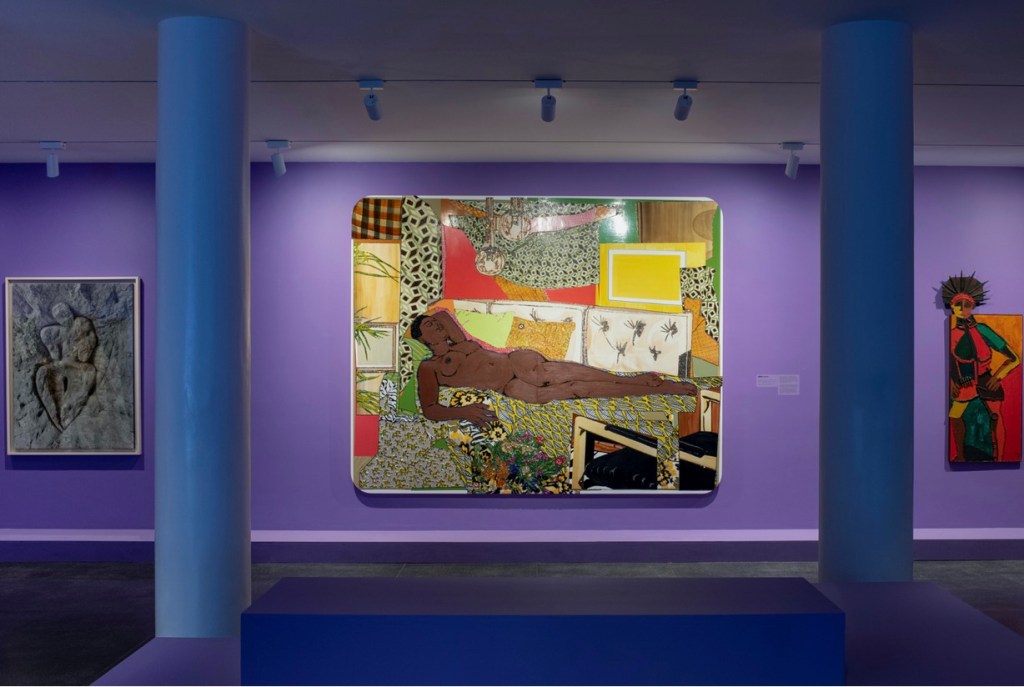
There’s the kernel of a better show here. Throughout are several references to what the curators are calling ‘both/and’ interpretation. It feels like a half-developed concept for a different exhibition, one that might have brought greater nuance to Picasso’s legacy. Picasso is still canonical, but at this point criticising or questioning him is standard. I learned about his misogyny, his appropriation and his general bad vibes in high school more than a decade ago.
Gadsby never touches on how or why he became so famous, and the show simply takes his dominance for granted. Notably, they have basically no engagement with his juvenilia – presumably the sketches and portraits here don’t give Gadsby the same fodder for the dick jokes that Picasso’s Vollard Suite engravings do, and because these are some of the most traditionally technically skilled works in the exhibition.
So much of Gadsby’s commentary defaults to aesthetic criticism, and it seems they deeply dislike most of what’s on display here by Picasso. It’s fine to dislike something, but going for things like the tiny, pebble-like Crying Woman sculpture on the grounds that, ‘Picasso had no formal training in sculpture’ is a pretty shallow commentary. Both/and art history would mean looking at the ways in which artists have critically reinterpreted his legacy, or reading his work in relation to his vicious personal life.
Read: Exhibition review: Once More With Feeling, Ngununggula
A major Faith Ringgold exhibition currently at the Musée Picasso in Paris puts her work in conversation with his to tell a more complex and considered story about power and appropriation. If comparative shows are done right, they can show a lineage or mutual reference point. Instead, the Brooklyn Museum’s version of both/and is a simplistic, girlboss-y narrative that reiterates the most basic arguments of second-wave feminism without substance.
Nochlin, Pollock and others have shown the barriers to women artists achieving the status of ‘artistic greatness’ and their work has allowed for the recovery of some truly incredible art into the canon; they also showed the fallacy of ‘discovering’ women artists only as substitutes for a famous man. We should be past this by now. It’s Pablo-matic goes for novelty over innovation, and what we’re left with is lacking in depth.
It’s Pablo-matic: Picasso According to Hannah Gadsby continues at the Brooklyn Museum (200 Eastern Parkway, Prospect Heights, Brooklyn, US) through to 24 September.
The exhibition was curated by Hannah Gadsby, Catherine Morris and Lisa Small, with Talia Shiroma.
This Alice Proctor review was originally published by Hyperallergic and reproduced in a content share agreement.
